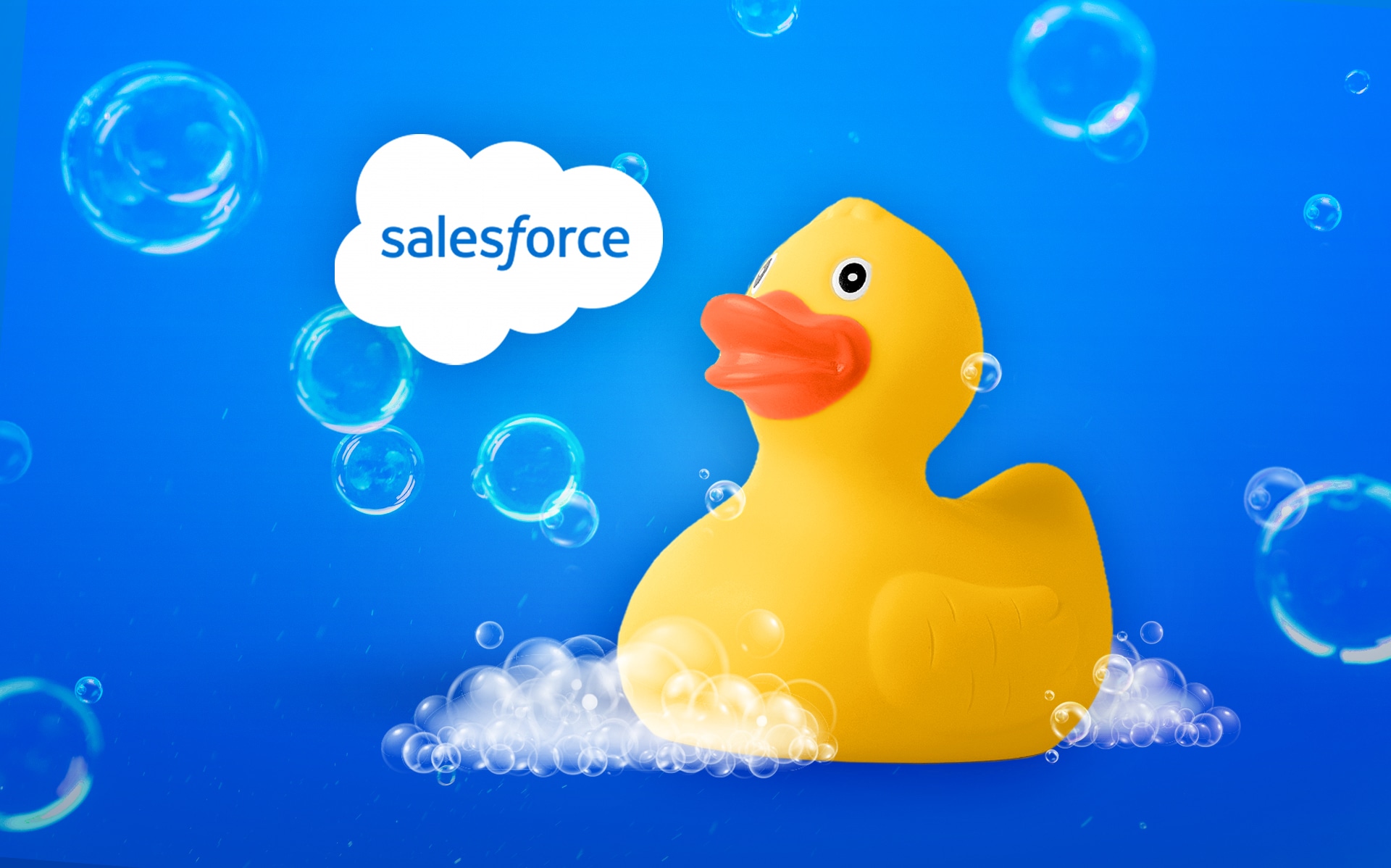In today’s digital business world, data is one of the greatest assets an organization can have. Good data helps drive decisions that improve products, services, and customer experiences. However, when data is bad, it becomes the culprit behind several significant challenges.
Without a proper cleanse that fixes recurring errors, bad Salesforce data will continue to compound and decay. Over time, this bad data can hinder marketing campaigns, sales initiatives, and reporting and analysis as well as stagnate team productivity. Eventually, with only bad data to work with, your organization may struggle to effectively reach new customers and may even harm relationships with your existing ones.
In this blog, we’ll identify common types of bad data, cover the reasons for a data cleaning, and provide our top tips for Salesforce data cleaning.
What does bad Salesforce data look like?
Commonly, CRMs like Salesforce are plagued with data-related errors. This can be due to data input error, poor data collection methods, or simply natural data decay. While most organizations know that some errors will almost always exist in their databases, 60% are not aware of how much this bad data is truly costing their business. The answer? On average, organizations lose $13 million in revenue each year because of dirty data.
These are the most common types of bad Salesforce data that organizations face:
- Duplicates: Multiple different records that have similar or the exact same data.
- Innaccuracy: Typos, data entry errors, or fields that are filled in incorrectly.
- Irrelevancy: Records or contact information that are outdated or no longer relevant.
- Inconsistency: No standardization with formatting fields within records.
- Incomplete: Missing data in key fields, such as company size, industry, or title.
The reasons for a Salesforce data cleaning
Good data is crucial for maximizing team productivity, reaching business goals, and staying ahead of the competition. But good data also has several benefits for your organization’s day-to-day operations. With high-quality data, every team can make more informed and confident decisions that propel the business forward. Good data also helps teams with more strategic audience targeting that increase the effectiveness of campaigns.
Did you know? Using FormAssembly to automate data collection workflows can help reduce errors, accelerate processes, and increase productivity for your team.
Good data ultimately improves your organization’s relationship with customers. Quality information about your customers means you can better understand their needs and provide more appealing products or services. Along with improving customer satisfaction, good data also helps improve the productivity and efficiency of your team. Additionally, quality data opens your organization to greater and more targeted opportunities that increase your competitive advantage and profitability.

Four tips for effective data cleaning
Several best practices exist that can help you improve the cleanliness of your organization’s data. Data cleaning is not a one-time task, but an ongoing process that helps ensure the long-term quality of this data as well. Follow these four tips to increase the effectiveness of your Salesforce data cleanse.
Identify root causes
The first step in cleaning Salesforce data is to identify where the majority of errors occur. Is your team inputting data manually, resulting in an increase in human error? Or relying on a web form platform that doesn’t have the right integrations with your business systems? These inconsistencies or errors within your current data collection methods may be the cause of bad data.
Catching bad data at the source will help you determine what needs to be changed or improved. This initial data audit provides a clear path toward quality data, whether it be through more team training, better software, improved data governance, or something else. Additionally, adopt a zero-tolerance policy for new bad data by minimizing the entry points of data to Salesforce.
Choose the right tools
Whether your organization deals with hundreds or thousands (or even millions) of datasets, having the right tools to effectively collect and manage this data is critical to maintaining it. Manual data cleaning for datasets this large is also generally too big of a task for a single data scientist or administrator. Having the right data cleaning tools in your systems not only accelerates cleaning processes but also helps to minimize the amount of time individuals spend on manual tasks.
Numerous data cleaning tools exist that can help your organization improve data quality. These tools can automate cleaning tasks, with specific functions that target and correct data quality issues, such as duplicates or missing values. In addition to adding data cleaning software, implementing an integrated web form platform like FormAssembly helps ensure that data entering your Salesforce Org is clean and high-quality from the start.
Standardize processes
The phrase “garbage in, garbage out” is just as relevant to data collection as any other process. Manual processes that begin with a customer filling out a paper form and end with an employee inputting data by hand into Salesforce are prone to numerous errors. These processes make it virtually impossible to have consistent validation or standardization of data collection methods.
Pro Tip: Using FormAssembly’s powerful web form builder, you can create custom forms to use for training employees about data cleanliness and standardization.
Adopting web forms for online data collection as well as training employees on validation standards and data cleaning software helps eliminate many of these data errors. Setting standards for data ensures that all data entered into Salesforce through a web form follows the same formatting (email, industry type, address, etc.). Standardization minimizes the discrepancies that lead to duplicate records and helps maintain data quality over time.
Complete routine audits
Once you have completed a comprehensive Salesforce data cleanse, the process does not stop there. Without proper maintenance, data errors and data decay will inevitably continue to occur. Conducting routine audits means that you will discover and resolve issues faster while providing your organization with an in-depth look at how data is being processed and stored.
A data quality audit should always include error identification, error resolution, and improved standardization protocols. These audits, when completed regularly, keep your data clean and give your team the information they need to improve processes, analyze accurately, and maintain productivity.
How to start data cleansing
A Salesforce data cleanse may feel overwhelming at first, but it is a necessary step for your organization. With clean, high-quality data available to leverage, your team has more time, knowledge, and resources to spend driving initiatives that help increase revenue. Unsure where to start? Read through our data cleaning checklist to get strategies and tips for an effective data cleanse.
